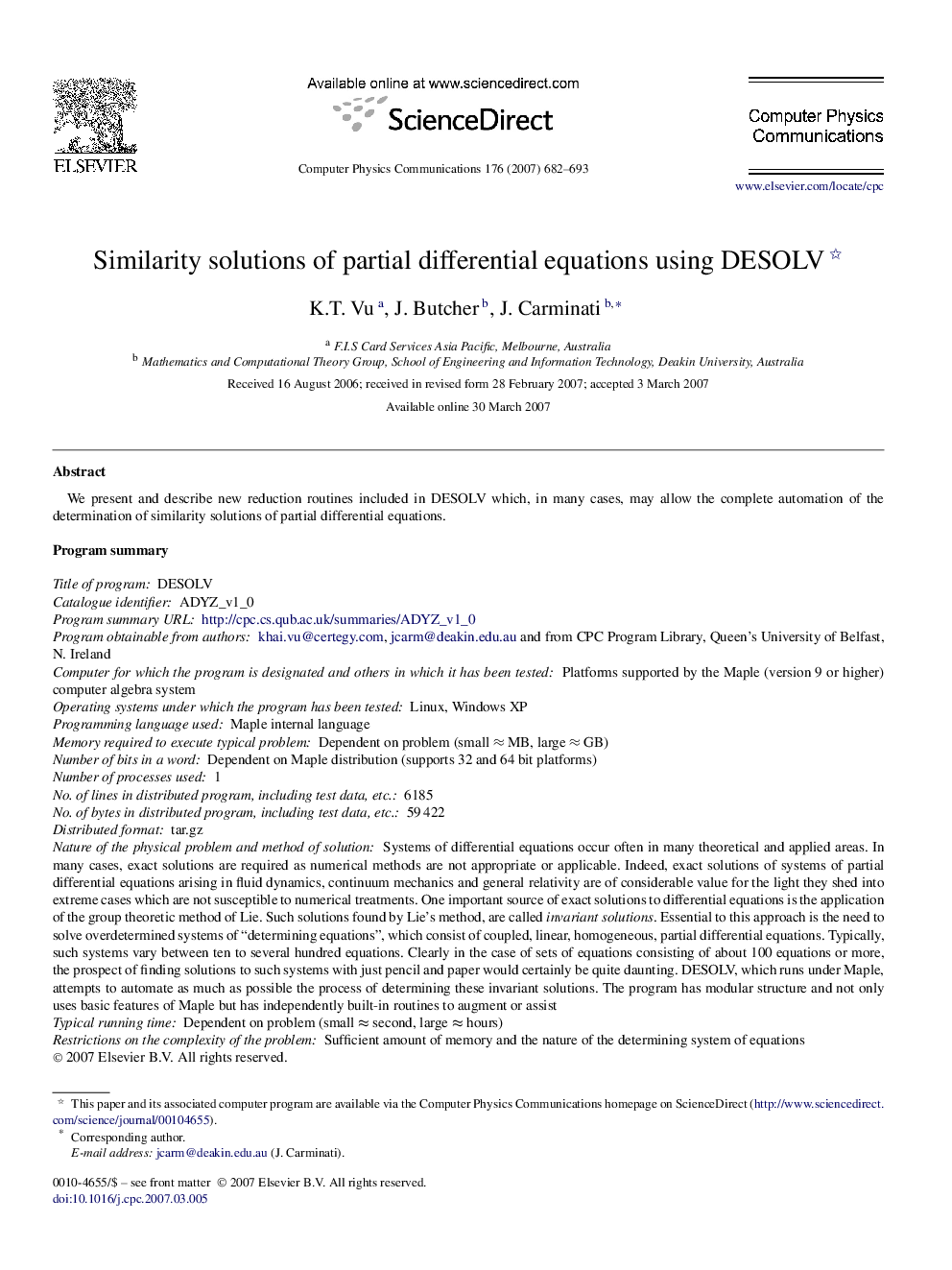| کد مقاله | کد نشریه | سال انتشار | مقاله انگلیسی | نسخه تمام متن |
|---|---|---|---|---|
| 503487 | 863770 | 2007 | 12 صفحه PDF | دانلود رایگان |

We present and describe new reduction routines included in DESOLV which, in many cases, may allow the complete automation of the determination of similarity solutions of partial differential equations.Program summaryTitle of program: DESOLVCatalogue identifier: ADYZ_v1_0Program summary URL:http://cpc.cs.qub.ac.uk/summaries/ADYZ_v1_0Program obtainable from authors:khai.vu@certegy.com, jcarm@deakin.edu.au and from CPC Program Library, Queen's University of Belfast, N. IrelandComputer for which the program is designated and others in which it has been tested: Platforms supported by the Maple (version 9 or higher) computer algebra systemOperating systems under which the program has been tested: Linux, Windows XPProgramming language used: Maple internal languageMemory required to execute typical problem: Dependent on problem (small ≈ MB, large ≈ GB)Number of bits in a word: Dependent on Maple distribution (supports 32 and 64 bit platforms)Number of processes used: 1No. of lines in distributed program, including test data, etc.: 6185No. of bytes in distributed program, including test data, etc.: 59 422Distributed format: tar.gzNature of the physical problem and method of solution: Systems of differential equations occur often in many theoretical and applied areas. In many cases, exact solutions are required as numerical methods are not appropriate or applicable. Indeed, exact solutions of systems of partial differential equations arising in fluid dynamics, continuum mechanics and general relativity are of considerable value for the light they shed into extreme cases which are not susceptible to numerical treatments. One important source of exact solutions to differential equations is the application of the group theoretic method of Lie. Such solutions found by Lie's method, are called invariant solutions. Essential to this approach is the need to solve overdetermined systems of “determining equations”, which consist of coupled, linear, homogeneous, partial differential equations. Typically, such systems vary between ten to several hundred equations. Clearly in the case of sets of equations consisting of about 100 equations or more, the prospect of finding solutions to such systems with just pencil and paper would certainly be quite daunting. DESOLV, which runs under Maple, attempts to automate as much as possible the process of determining these invariant solutions. The program has modular structure and not only uses basic features of Maple but has independently built-in routines to augment or assistTypical running time: Dependent on problem (small ≈ second, large ≈ hours)Restrictions on the complexity of the problem: Sufficient amount of memory and the nature of the determining system of equations
Journal: Computer Physics Communications - Volume 176, Issues 11–12, June 2007, Pages 682–693